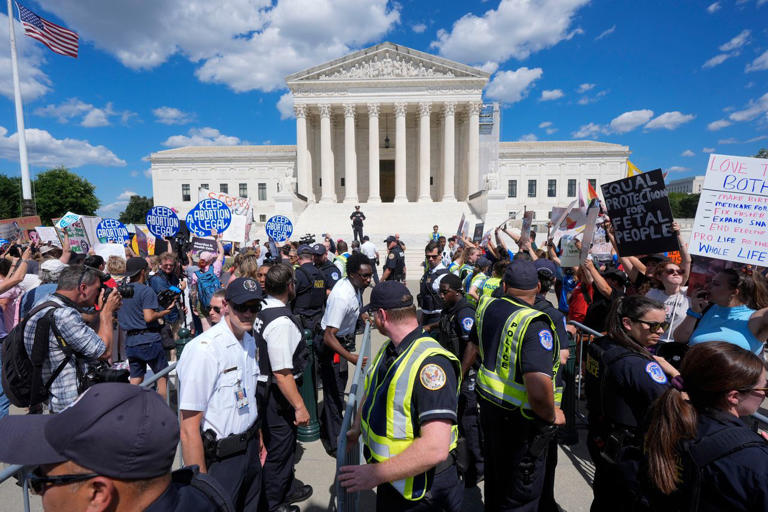The Supreme Court’s recent deliberations over emergency abortions in Idaho have highlighted a complex legal and ethical debate surrounding reproductive rights and healthcare access. Here’s a detailed expansion on the issue:
Context and Legal Background
Idaho state law restricts abortions except when necessary to save a woman’s life. However, under federal law, specifically the Emergency Medical Treatment and Labor Act (EMTALA), hospitals that accept Medicare are required to provide emergency care, including abortions, when necessary to stabilize a patient’s health crisis.
Supreme Court’s Decision and Reaction
A draft decision accidentally posted on the Supreme Court’s website indicated a 6-3 vote to dismiss Idaho’s appeal of a lower court order allowing emergency abortions under EMTALA. The decision was based on the argument that federal law preempted Idaho’s stricter state law on abortion in emergency situations.
The court’s statement clarified that the document was uploaded inadvertently and that the final decision was yet to be released. Despite this, the draft decision revealed a divided court, with justices expressing differing views on the interpretation and application of federal versus state law in such cases.
Justices’ Opinions
In the draft decision, six justices were prepared to address the core issue: three supported the Biden administration’s stance that EMTALA allows for emergency abortions, while three aligned with Idaho’s more restrictive interpretation. The pivotal decision was influenced by Chief Justice John Roberts and Justices Brett Kavanaugh and Amy Coney Barrett, who advocated for allowing lower courts to handle the evolving legal complexities surrounding the issue.
Justice Amy Coney Barrett, in her concurring opinion, noted that recent developments had blurred the lines of disagreement between the parties. Both the Justice Department and Idaho had signaled potential areas of agreement, suggesting a narrowing of the legal dispute.
Implications and Future Considerations
The Supreme Court’s handling of this case comes against the backdrop of its 2022 decision in Dobbs v. Jackson Women’s Health Organization, which overturned Roe v. Wade and allowed states greater latitude in restricting abortions. The current deliberation underscores ongoing legal battles over reproductive rights and the extent of federal versus state authority in regulating healthcare, especially in emergency scenarios.
Public and Legal Community Reactions
Advocacy groups on both sides have reacted strongly to the ongoing legal uncertainties. Proponents of abortion rights argue that decisions like these prolong legal ambiguities and potentially endanger women’s health by delaying necessary medical procedures. Conversely, opponents assert that state laws are necessary to protect unborn life and that federal mandates should not supersede state sovereignty in regulating healthcare practices.
Conclusion
The Supreme Court’s eventual ruling on Idaho’s appeal will have far-reaching implications for abortion rights and healthcare regulations across the United States. The case exemplifies the complexities of balancing federal law with state-level regulations in sensitive matters of healthcare, ensuring that legal protections and medical access remain in equilibrium.
As the legal process continues, stakeholders and the public await the Supreme Court’s final decision, which will clarify the extent of federal preemption in emergency medical situations under EMTALA and potentially influence future legislative and judicial actions regarding reproductive rights.
For further developments, observers will closely monitor how the court’s eventual decision aligns with constitutional principles and societal expectations regarding healthcare access and patient rights.
